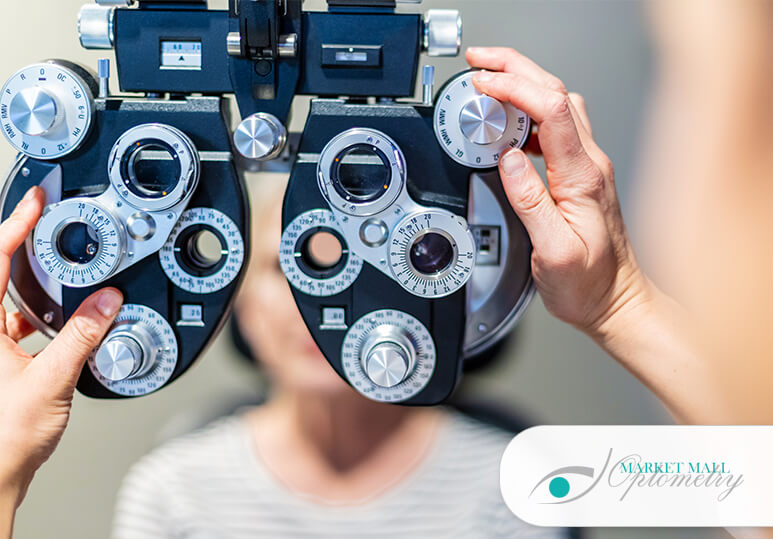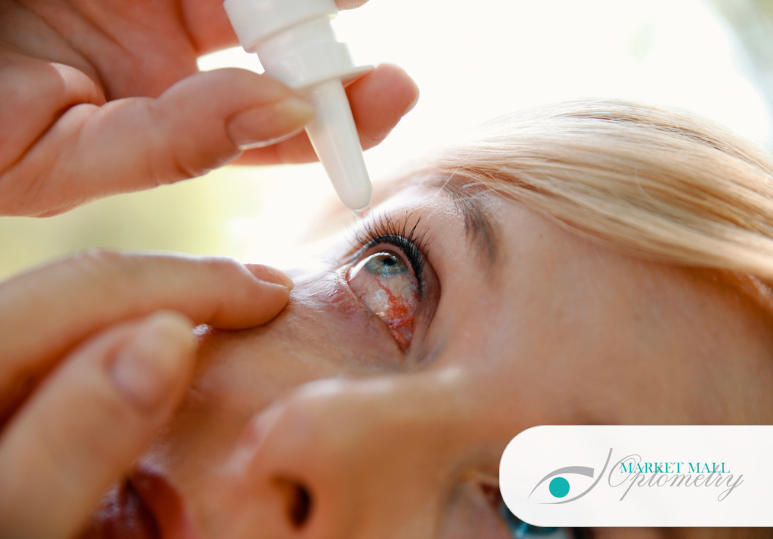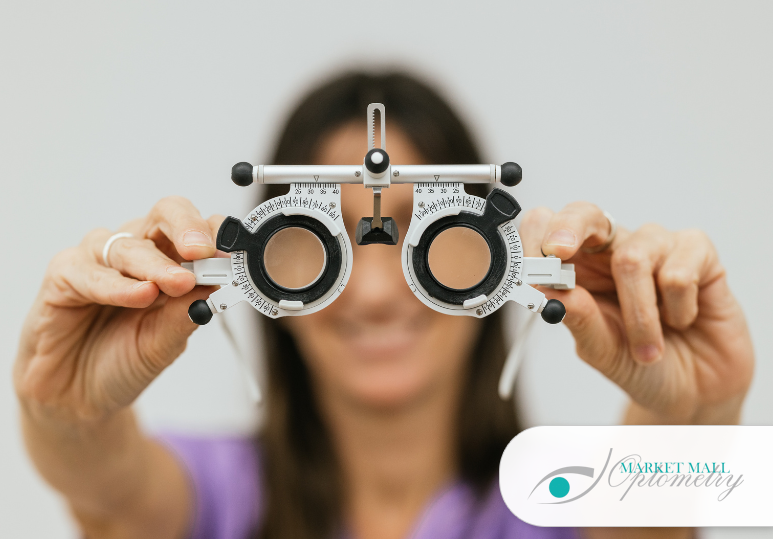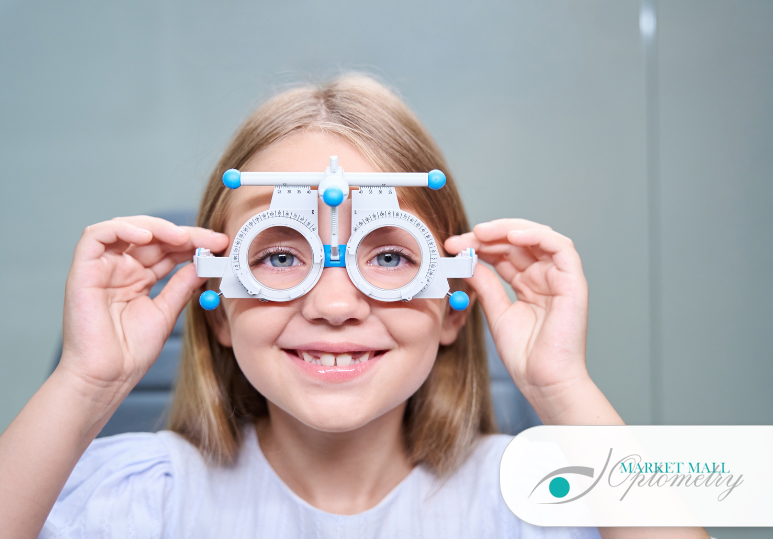What To Expect During A Comprehensive Eye Exam For Both Children, Adults, And Seniors
Vision tests: While looking at an eye chart, your optometrist will check for nearsightedness, farsightedness, presbyopia, and astigmatism. If necessary, your eye doctor will determine a prescription for corrective lenses.
Coordination of eye muscles: Your eye doctor will use a light and move it in a set pattern to test your ability to use both eyes together.
Peripheral vision test: Your eye doctor will move an object to the edge of your field of vision to assess if you can see it.
Pupil response: Your optometrist will shine a light into your eye to see the pupil reaction.
Colour testing: Your eye doctor will ask you to describe figures in a series of illustrations made up of numerous coloured dots or circles to test your ability to differentiate between different colours.
Interior eye check: After dilating your eyes, your optometrist will administer special eye drops and will use an ophthalmoscope to see through your retina and optic nerve at the back of your eye. This is how indicators of certain eye and health diseases can be found.
Measurement of fluid pressure: With the use of a tonometer, your eye doctor will release a puff of air onto your eye. This will test the pressure inside of your eye to indicate if there are any signs of glaucoma or other diseases.
The Difference Between Children’s Eye Exams And Adult Eye Exams
From what an optometrist may look for, to what tools they use, here are three differences between a child’s eye exam and an adult eye exam:
Different Equipment Is Used
Many of us recognize a phoropter— a tool that resembles big binoculars and enables you to choose and answer questions in regards to how well you can see words and objects in front of you. For children, verbalizing what is blurry and what they can see clearly can be challenging so other tools are required to better determine the clarity of their vision. The use of an old-fashioned retinoscope can be used to measure the refractive error from a distance that is non- threatening to your child. This will allow for better communication and cooperation from your child during the eye exam.
Children Are Checked For Different Eye Conditions
In an adult or senior eye exam, optometrists are on the lookout for signs of conditions like glaucoma and cataracts. While optometrists still look for these red flags during your child’s eye exam, they will also be looking out for developmental issues in their vision. Such issues include strabismus (cross-eyes) and amblyopia (lazy eye). If these conditions are not detected and corrected right away, severe vision problems can persist into the future that will affect your child’s developmental process and their ability to learn.
Children Receive Functional Eye Exams
When a child has developmental or learning difficulties, poor eyesight may be the culprit. Functional eye exams are able to pinpoint any issues that may affect a child’s ability to learn. It can be an undiagnosed vision problem that causes issues with keeping focus at a distance or problems maintaining concentration. These problems may even be overlooked when diagnosing a child with ADHD/ADD. Functional eye exams look at how your child’s eyes perform in daily or academic situations. It goes beyond looking for 20/20 vision and looks at the vast array of all visual skills.
Senior, Children, And Adult Comprehensive Eye Exams In Calgary
Your eyes are one of the most complex organs in your body. A comprehensive eye exam is extremely important to check for vision clarity and also to detect health problems such as high blood pressure or diabetes. Although children’s and senior/adult eye exams both check for vision accuracy and any signs of eye-related conditions, children’s eye exams require different processes to accommodate your child and ensure a smooth, tear-free exam.
Eye exams do not just check the quality of your vision, they evaluate your eye health. If you are currently living with eye health complications or poor vision, there is a chance you have become accustomed to the symptoms and do not realize you require professional help. Our team of experienced eye doctors at Market Mall Optometry in Calgary understands just how important regular eye exams are for your overall health. To book a comprehensive eye exam for you or your child, contact Market Mall Optometry by calling 403-286-4884 or filling out our online contact form.
FAQs
Q: How often should adults, seniors, and children receive a comprehensive eye exam?
A:
- Ages 20-54: Once every 1-2 years
- Ages 55+: Once a year
- Children: Children at the age of 6 months should receive a comprehensive eye exam that is performed by an optometrist, not a family practitioner. They will also require an eye exam at the start of preschool (ages 3-4) and then once every 2 years.
Q: How long do comprehensive eye exams take?
A: Most comprehensive eye exams take less than 60 minutes depending on what your vision requirements are and what vision tests are performed.
Q: Who is covered by Alberta Health Care?
A: Alberta Health Care Insurance Plan covers all comprehensive annual eye exams for children aged 0-18 and for adults aged 65+. The AHCIP also provides coverage for all emergency visits to the eye doctor.





